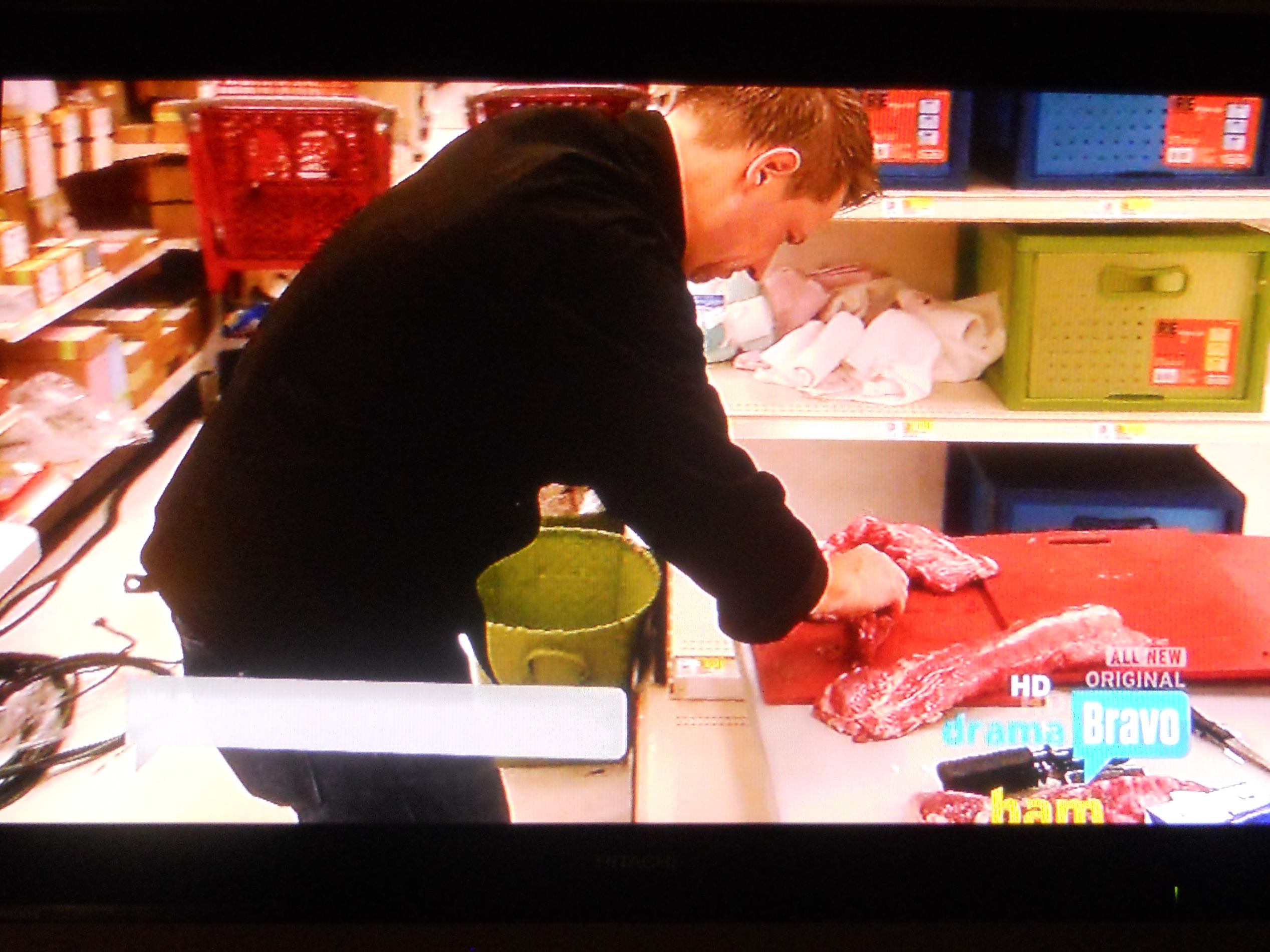The producers of Bravo’s Top Chef have me pegged as their target audience. Tonight’s episode featured the Sesame Street characters Telly, Cookie Monster, and Elmo (who were hilarious judges), and new ads for Target featuring former Top Chef cheftestants and Padma. It’s an entertaining episode that left me with a bad taste in my mouth.
 Tonight’s challenge was to cook a meal for 100 employees in a closed Target super store in the middle of the night. Because of the improvised cooking setting, the chefs were forced to set up their kitchens, find their ingredients, and prepare to serve the employees and judges within a 3 hour time limit. Some concentrated on table linens, some on flavors, but there was a frightening absence of handwashing. Granted, many of the chefs opted to make soup, which in theory should allow for thorough cooking of all ingredients. But what about any fancy garnish and fresh salad that ends up on the plate?
Tonight’s challenge was to cook a meal for 100 employees in a closed Target super store in the middle of the night. Because of the improvised cooking setting, the chefs were forced to set up their kitchens, find their ingredients, and prepare to serve the employees and judges within a 3 hour time limit. Some concentrated on table linens, some on flavors, but there was a frightening absence of handwashing. Granted, many of the chefs opted to make soup, which in theory should allow for thorough cooking of all ingredients. But what about any fancy garnish and fresh salad that ends up on the plate?
My favorite of the season, Richard Blais, made a pork tenderloin (pictured right exactly as shown). He then topped his finished pork with some freshly sliced apple and green chili slaw before serving. His concern? "It’s not the prettiest dish in the world. I know that. But I’m ready to defend my dish if I have to. I think it’s tasty."
He then topped his finished pork with some freshly sliced apple and green chili slaw before serving. His concern? "It’s not the prettiest dish in the world. I know that. But I’m ready to defend my dish if I have to. I think it’s tasty."
Anthony Bourdain confirmed, "Frankly, I think Richard’s disk was butt ugly, but it was delicious."
One day I hope a chef will stand up and protest the cooking conditions or demand a meat thermometer. I will leave the food safety assessment to the experts, but I spotted a few potential concerns:
– using all cooking utensils and dishes straight from boxes with no chance to sanitize them
– improvised utensils, linens, garbage cans, etc.
– no handwashing stations, sanitizing solutions or rags to clean work surfaces or dishes.
I have hit pause on the DVR so many times that I’m not even done watching this episode yet, but I hope it does not end with a foodborne outbreak.


.jpg) over 800,000 eggs per day yet has never found a salmonella-positive test result.
over 800,000 eggs per day yet has never found a salmonella-positive test result..jpg) from being exposed to it, primarily by controlling mice and flies that may carry salmonella or spread it around.
from being exposed to it, primarily by controlling mice and flies that may carry salmonella or spread it around.